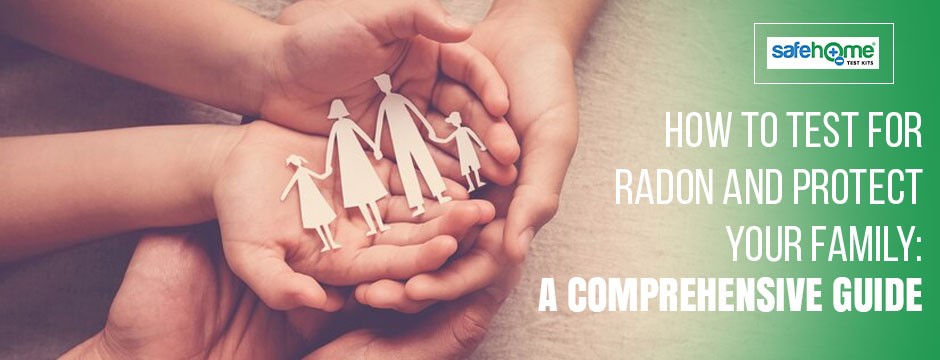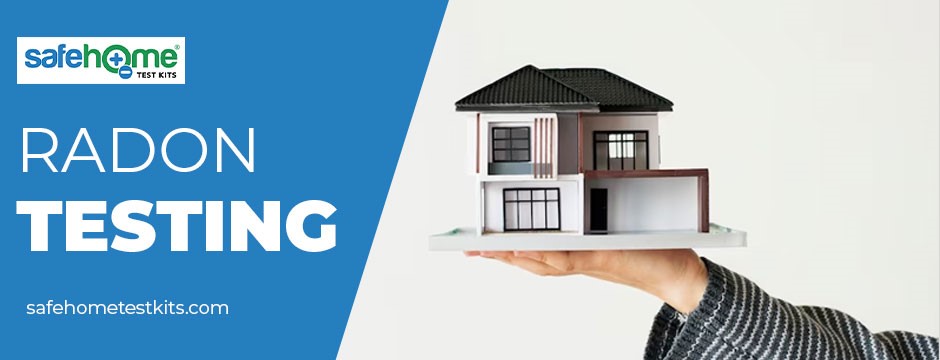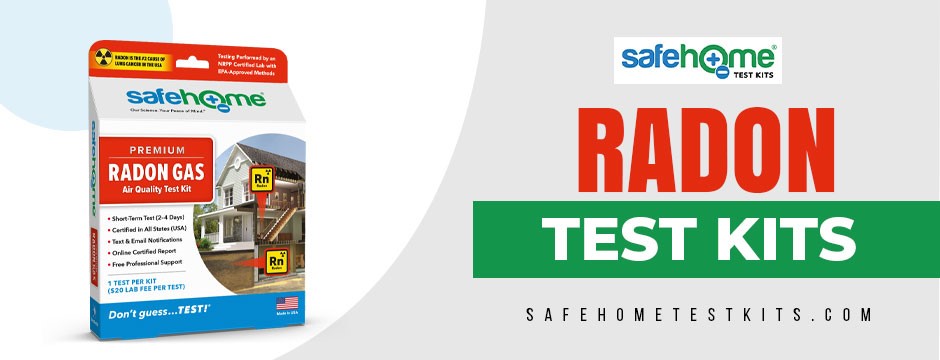How to Test for Radon and Protect Your Family: A Comprehensive Guide

Regarding home safety, we often consider securing our homes from burglaries, fires, and other visible threats. However, an invisible, odorless, and potentially deadly intruder may lurk in your home: radon gas. Radon is a naturally occurring radioactive gas that can seep into homes from the ground, posing a serious health risk to you and your family. This comprehensive guide will explore what radon is, why it’s dangerous, how to test it, and the steps to protect your loved ones.
Understanding the Threat: What Is Radon?
Radon is a colorless, odorless, and tasteless gas that is a byproduct of the radioactive decay of uranium and radium in the soil. It’s present in nearly all soils, and in low concentrations, radon is harmless. However, when radon gas becomes trapped in enclosed spaces, like homes and buildings, it can accumulate to dangerous levels.
The Health Risks of Radon Exposure
Radon exposure is a significant health concern because it’s a leading cause of lung cancer, second only to smoking. When inhaled, radon gas decays into radioactive particles that can damage lung tissue and increase the risk of lung cancer. The longer the exposure and the higher the radon levels, the greater the risk.
Testing for Radon: Your First Line of Defense
Testing for radon is the crucial first step in protecting your family’s health. The good news is that radon testing is relatively easy and affordable. Here’s how to get started:
- Choose the Right Radon Test Kit:
There are two primary types of radon test kits: short-term and long-term.
- Short-term tests typically remain in your home for 2 to 7 days and provide a snapshot of radon levels.
- Long-term tests stay in your home for more than 90 days, providing a more accurate average radon level over time.
Your choice depends on your preferences and how quickly you want results. Short-term tests are often used for initial screenings, while long-term tests are better for ongoing monitoring.
- Conduct the Test:
Follow the instructions provided with your chosen test kit carefully. Most radon test kits involve the following steps:
- Place the test kit in the lowest livable level of your home, such as the basement or a ground-floor room.
- Keep windows and doors closed as much as possible during testing to ensure accuracy.
- Avoid placing the test kit in areas with high humidity, like bathrooms or kitchens, as it can affect the results.
- Wait for the Results:
Once the testing period is complete, send the test kit to a certified laboratory for analysis. You will receive a report detailing your home’s radon levels.

Understanding Radon Test Results: What Do the Numbers Mean?
Radon levels are typically measured in picocuries per liter (pCi/L). The Environmental Protection Agency (EPA) has established recommended action levels:
- 4 pCi/L or higher: Reducing radon exposure is essential if your test results show radon levels at or above 4 pCi/L. The higher the level, the more urgent the need for mitigation.
- 2-4 pCi/L: While this range is below the EPA action level, it’s still advisable to consider mitigation, especially if you have children or spend much time in the affected area.
- Below 2 pCi/L: Radon levels below 2 pCi/L are considered low, and the risk of health problems is minimal. However, long-term monitoring is still a good practice, as radon levels can fluctuate.
Radon Mitigation: Protecting Your Family
If your radon test results indicate elevated levels, it’s essential to take action to reduce radon exposure. Radon mitigation involves various strategies to prevent radon from entering your home or to remove it if it’s already present. Here are some common radon mitigation methods:
1. Soil Depressurization Systems:
- Sub-slab Depressurization: This method involves inserting a pipe through the basement floor into the soil beneath your home. A fan is then employed to create a vacuum beneath the concrete slab. This vacuum draws radon gas from the soil and directs it outside, preventing it from entering your living spaces. Sub-slab depressurization is a highly effective technique for mitigating radon in homes with basements or concrete slab foundations.
- Sump Pit Depressurization: This feature can be repurposed to aid in radon mitigation for homes with a sump pump. A pipe is connected to the sump pit, and a fan is used to draw radon gas from beneath the foundation and redirect it through it. From there, the gas is vented safely outdoors. This approach is a practical solution for homes with sump pits, optimizing the use of existing infrastructure.
2. Sealing and Ventilation:
- Sealing Cracks and Gaps: Properly sealing cracks and gaps in your home’s foundation is a fundamental step in preventing radon entry. Radon can infiltrate through even the tiniest openings in your home’s structure. By meticulously sealing these vulnerabilities, you create a barrier that impedes radon’s path into your living spaces. This method is often used with other mitigation strategies to enhance their effectiveness.
- Ventilation Systems: Improving ventilation within your home can play a pivotal role in reducing radon levels. Adequate ventilation ensures that radon gas doesn’t accumulate indoors. Increasing airflow and circulation can dilute radon concentrations and help expel the gas from your living spaces. Ventilation systems are particularly beneficial in areas where radon levels are moderately elevated, complementing other mitigation methods to maintain safe indoor air quality.
3. Radon-Resistant New Construction: Building a Strong Foundation for Radon Defense
When constructing a new home, you have a unique opportunity to safeguard it against the threat of radon from the very beginning. This approach involves integrating radon-resistant construction techniques right from the ground up. The primary objective is to create a home inherently resilient to radon infiltration. Here’s a closer look at what this process typically entails:
– Radon Barrier Installation: A fundamental element of radon-resistant new construction is installing a radon barrier. This barrier is typically a heavy-duty plastic sheet or membrane beneath the home’s concrete slab foundation. It is a robust shield, preventing radon gas from seeping through the foundation and into your living spaces.
– Venting System Design: Besides the radon barrier, a venting system is strategically designed and integrated into the construction. This system includes PVC pipes extending from the soil beneath the foundation to the home’s exterior, safely routing any radon gas that may accumulate beneath the slab to the outdoors. A crucial component of this system is a vent fan, which ensures that radon is effectively vented away from your living areas, keeping indoor concentrations at safe levels.
4. Professional Mitigation Services: Enlisting Experts to Ensure Safety
When dealing with high radon levels or facing complex mitigation challenges, seeking professional radon mitigation services is a prudent and responsible course of action. Certified radon mitigation professionals have specialized knowledge, experience, and advanced equipment to tackle even the most challenging scenarios. Here’s why you might consider their expertise:
– Tailored Mitigation Solutions: Certified radon mitigation professionals possess the expertise to evaluate your situation comprehensively. They consider your home’s construction, layout, and geographical location to design a mitigation system customized to your home’s unique needs. This tailored approach ensures the most effective radon reduction.
– Advanced Mitigation Techniques: These professionals are well-versed in employing advanced mitigation techniques to address high radon levels or complex indoor environments. They can utilize multiple mitigation strategies, such as sub-slab depressurization, sump pit depressurization, or even more innovative methods, if necessary, to ensure that your home’s radon levels are brought down to safe levels.
– Compliance with Regulations: Radon mitigation professionals are familiar with local regulations and building codes related to radon mitigation. They ensure that all work is carried out in compliance with these standards, providing you with the assurance that your home meets the necessary safety requirements.
– Quality Assurance: Many certified professionals offer post-mitigation testing to verify the effectiveness of the mitigation system. This step ensures that your home’s radon levels have been reduced and your family can enjoy a safe living environment.
Taking Action to Protect Your Family
If necessary, testing for radon and implementing mitigation measures are vital to protecting your family from the hidden danger of radon gas. Remember that radon levels can fluctuate, so it’s a good practice to test your home periodically, especially if you’ve changed your home’s foundation or ventilation system. Radon is a preventable health risk, and by taking action, you can ensure that your home is a safe and healthy environment for you and your loved ones.

Radon Gas Test Kit – (We Test At-Lab) – Premium
Detecting and addressing radon is paramount, as this hazardous gas can silently infiltrate your home. It originates from the natural decay of radioactive uranium in the bedrock and can seep into homes through various pathways, including foundation cracks, drains, pipes, sumps, and even well water. Once inside, radon spreads through your home via the HVAC system, posing a significant health risk. Shockingly, radon is the leading cause of lung cancer among non-smokers in the USA, claiming the lives of 20,000 people each year. Because radon is invisible, odorless, and tasteless, the only way to safeguard your family is through testing.
Safe Home® offers premium Radon Test Kits thoughtfully designed for simplicity and accuracy. Our kits include everything you need for easy sample collection, secure shipping, and testing conducted by our NRPP-certified lab, adhering to EPA-approved methods. Trusted by homeowners, contractors, and home inspectors alike, our lab holds NRPP certification in all 50 states for radon testing, meeting the stringent requirements for home inspections, mortgage loans, and real estate closings. It’s time to take proactive measures against radon and prioritize your family’s health with Safe Home’s Radon Test Kits.
Conclusion: Guarding Against an Invisible Threat
Radon may be invisible, but its impact on your health is real. Testing your home for radon and taking appropriate mitigation measures can significantly reduce the risk of radon-related health problems. Don’t wait until it’s too late—take proactive steps to protect your family and create a safe, healthy living environment. Your family’s well-being is worth every effort.


